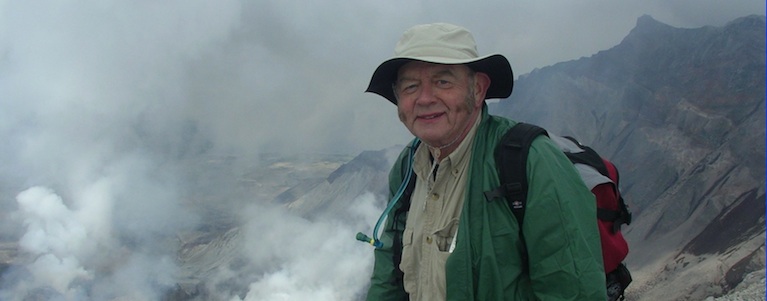The Parker Solar Probe – A Mission to Touch the Sun
People around the world look up and see our Sun every day. But through a space telescope, it looks nothing like it does from down on the ground. The surface dances with arches of solar material that reach up into the solar atmosphere – an environment of charged particles and magnetic fields unlike anything we experience on Earth. In 2018, the Parker Solar Probe will launch from a Delta IV Heavy rocket and travel approximately 3 months to take its first swing by the Sun right through that atmosphere. Over sev-en years it will get ever closer, un-til ultimately it’s within 3.9 mil-lion miles (6.2 million km) of the Sun’s surface. That’s so close, that the previous record holder, the He-lios-B Spacecraft, was seven times farther away.
An important objective of the Parker Solar Probe is to learn more about the solar wind, an exotic stew of magnetic forces, plasma and particles. It interacts with plan-etary magnetospheres and atmos-pheres, which over the eons may have contributed to a planet’s hab-itability. It blankets our spacecraft and astronauts traveling to the moon or Mars. It affects space weather at and around Earth and causes beautiful aurorae.
The solar wind also travels at immense speeds, and scientists want to learn why. It leaves the Sun at a speed of up to 500 miles (800 km) a second and engulfs all major planets in the solar system. What is the source of the wind? From a distance, it’s difficult to tell.
Dr. Adam Szabo, the Parker mis-sion scientist at NASA’s Goddard Space Flight Center says, “We’ve been examining the solar wind for over 50 years. But the wind is pro-cessed by the time it reaches Earth. By studying it much closer to the Sun, the Parker Probe will be able to tell us such things as what part of the Sun is providing the energy source for the wind’s particles and how they can accelerate to such incredibly high speeds.”
From NASA Science News 2018
The International Asteroid Hunt
On February 15, 2013, a house-sized meteor entered into Earth’s atmosphere at over 40,000 mph and exploded 14 miles above Chelya-binsk, Russia. The blast – wielding more than 30 times the energy of the Hiroshima atom bomb – gener-ated a shock wave that shattered windows and damaged buildings in several Russian cities, injuring over 1600 people.
“The Chelyabinsk event was an ominous warning shot. It drew attention to what should be done to detect even larger asteroids that could possibly strike our planet.”
According to Johnson, the need for worldwide collaboration in as-teroid detection and tracking was already recognized, but Chelya-binsk was a spectacular reminder.
It was also an ironic coincidence.
“Our report with recommenda-tions on what should be done about the hazard from near-Earth objects (NEOs) was being presented at a U.N. committee meeting that very same day.”
That coincidence helped lead to a coordinated effort among many nations to keep a closer eye on the sky. In 2013, the United Nations endorsed the creation of the Interna-tional Asteroid Warning Network (IAWN), for which observatories around the world regularly search the skies to find and track asteroids and comets whose orbits periodical-ly bring them within 30 million miles of Earth’s orbit. Additional-ly, NASA established the Planetary Defense Coordination Office (PDCO) in 2016 to organize the near-Earth object search and to plan and coordinate any response to pos-sible asteroid impacts.
So, how well would the IAWN, the PDCO, and their partners work together if an object was flying into Earth’s neighborhood?
October 2017 presented a golden opportunity for asteroid trackers around the world to test their abil-ity to operate as a coordinated net-work. Led by the US, IAWN mounted a practice observation campaign to find and track a small asteroid named 2012 TC4, first detected in 2012. While this aster-oid posed no risk of impact with Earth, it was predicted to come back into view in the fall of 2017 with a very close approach.
Observers with the European Space Agency and the European Southern Observatory were the first to re-acquire 2012 TC4 in late July 2017 by calculating where to look with an 8-meter aperture telescope in Chile. Then, more than a dozen observatories, universities, and space labs around the globe detect-ed 2012 TC4 and reported their observations to the Minor Planet Center at the Smithsonian Astro-physical Observatory where experts calculate asteroid orbits to identify any danger to Earth.
As expected, the object ap-proached and passed by Earth on October 12, 2017.
Dr. Kelly Fast is manager of NASA’s NEO Observations Pro-gram at NASA Headquarters.
“This was a very successful exer-cise for the IAWN with precise prediction of the orbit and tracking of the asteroid. It passed about 27,000 miles from Earth’s surface – only a tenth of the distance to our Moon.”
From NASA Science News 2018


L. Grossman. The planet-hunting Kepler space telescope is dead. Science News Online, October 30, 2018.